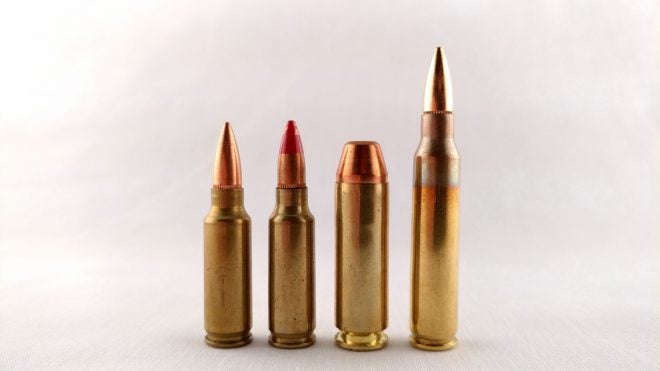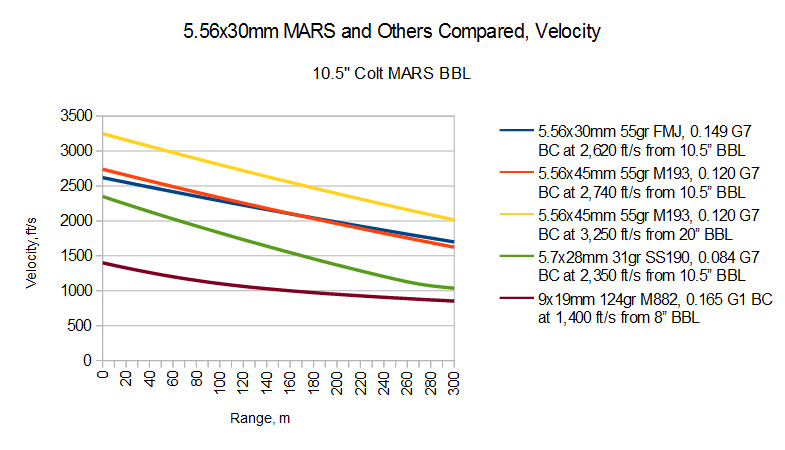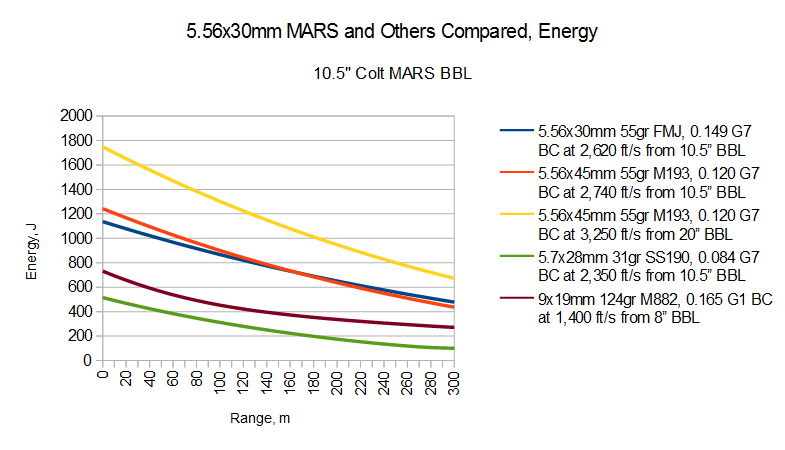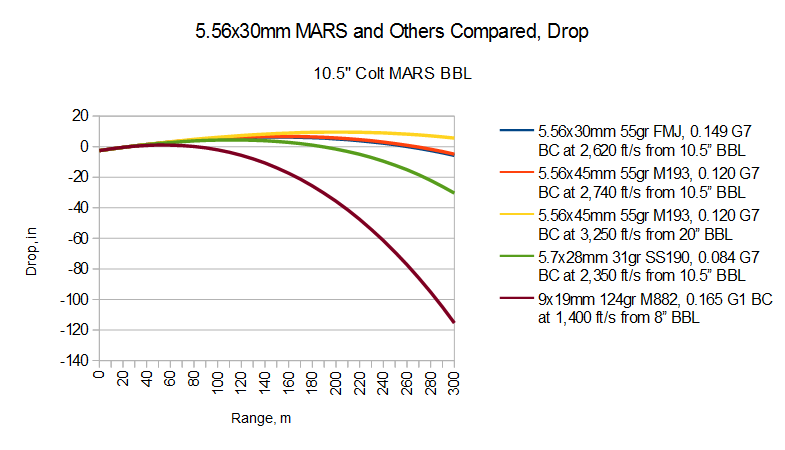Today on Modern PDW Calibers we’re going to look at what might seem like a humdrum round, but which represents an important performance band for the modern personal defense weapon. That round is the 5.56x30mm MARS, a purpose built “micro assault rifle” cartridge from Colt designed to fill a similar niche to the WWII-era .30 M1 Carbine.
We’ve mentioned the MARS and its short 5.56mm round before, in a rebuttal to a piece from Business Insider. Designed in the late 1990s as part of a Colt project for what was essentially a spiritual successor to the M1 Carbine, the 5.56x30mm MARS represents a take on the Personal Defense Weapon caliber that is rarely explored. Too large for use in handguns, but much smaller and less powerful than intermediate assault rifle rounds, the 5.56x30mm is a sort of “everything you need and nothing you don’t” round for echelon troops, special forces, and other units requiring a small, maneuverable weapon with a potent but moderate round. With a muzzle velocity of approximately 2,600 ft/s (800 m/s) with a 55gr (3.6g) bullet, the 5.56×30 MARS is a sort of “small caliber, medium velocity” (SCMV) round that could give all the benefits of a rifle at close ranges with almost all the benefits of a submachine gun, including ammunition tailor-made for short, 10.5″ barrels.
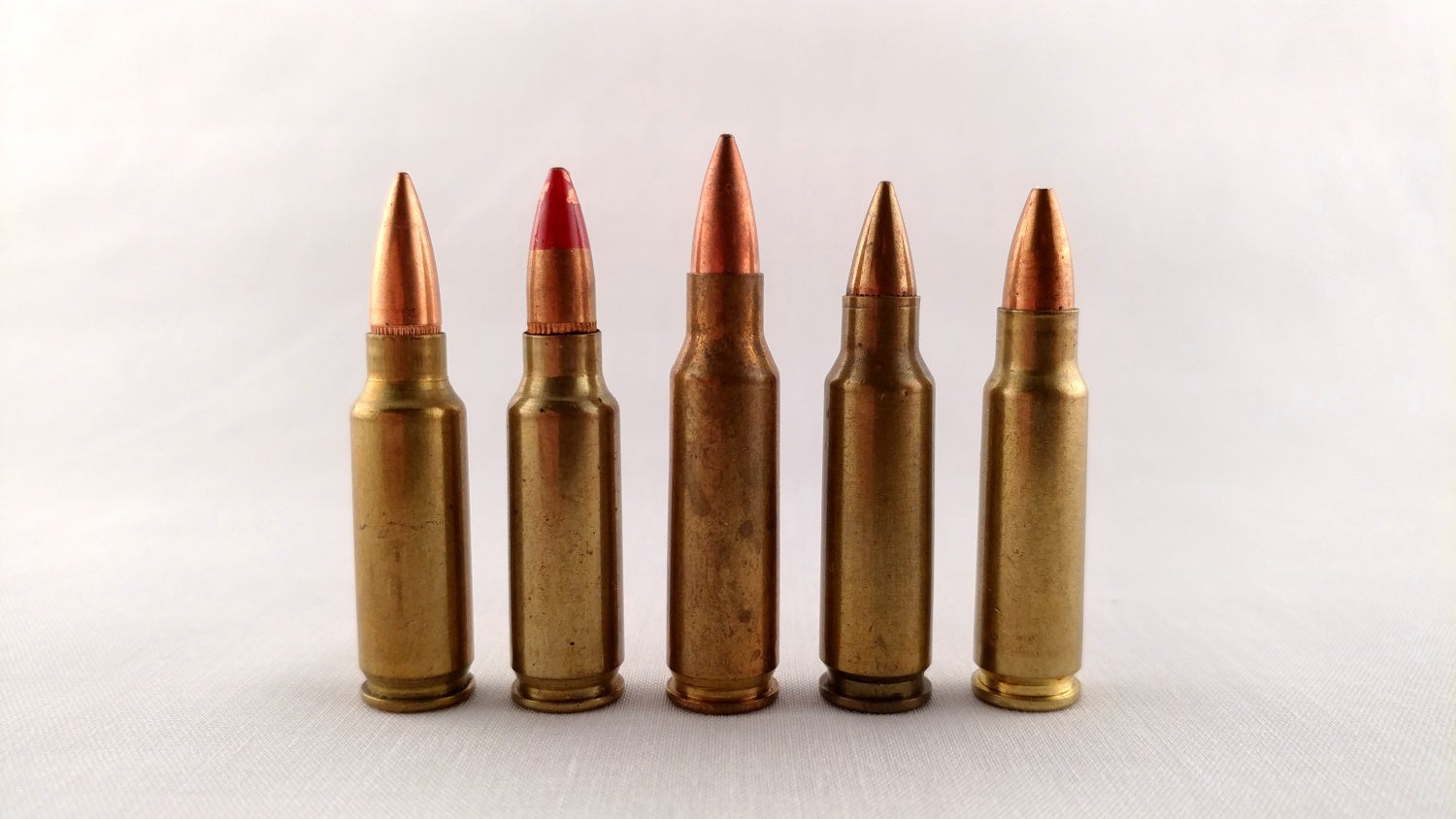
The 5.56x30mm MARS is similar to many other rounds, including the .221 Fireball (center), .22 Aberdeen Proving Grounds Carbine (middle right), and .22 Johnson Spitfire (far right).
Before we get into the ballistics, I should make a note about the figures I am using for the 5.56mm MARS and for the 5.56 M193. There is quite a lot of variety in the shapes of different 55gr “M193” bullets, even within one lot, and this leads to substantial differences in the ballistic coefficients of each individual bullet. 0.120 G7 is an accepted value for the ballistic coefficient of M193, but it represents the blunter, less aerodynamic bullet shapes that can be found in ammunition labeled “M193”. Other projectiles of the same weight, such as the Sierra 55gr FMJ, may have much higher ballistic coefficients in the 0.140-0.150 range, due to their finer shape. For the 5.56mm M193, I have used the 0.120 G7 figure to represent what is generally accepted to be the performance of this round, but I have used a higher 0.145 G7 BC figure for the 5.56mm MARS, as the MARS rounds in my possession have what appear to be loaded with bullets on the finer end.
Anyway, onto the charts:
In many respects, the 5.56×30 MARS was nothing new, even when it was first developed. The .221 Remington Fireball preceded it, and even the very first modern SCHV round – the .22 Gustafson/Aberdeen Proving Ground Carbine round – closely resembles it. In the 1980s, the French also developed a similar round, the 5.56×30 GIAT. However, the 5.56×30 MARS is perhaps the most refined, and therefore makes a good representative of this class of rounds. The MARS was designed specifically to have the most efficient ignition and highest possible performance from short barrels, and came packaged with a quite handy looking shortened AR-15-style carbine to match. Since the 5.56 MARS was developed, the Indians have also played around with a very similar round, the 5.56x30mm MINSAS.
What sets the 5.56×30 MARS and similar calibers apart from rounds like the 5.7×28 FN is that they are designed specifically for use in carbines and micro assault rifles, and not with any provision for use in pistols, and that they are higher performance than most high velocity rounds designed for handgun use but less powerful than traditional SCHV rounds like 5.56x45mm.
In terms of weight, the 5.56x30mm MARS is a bit lighter then 5.56mm as you might expect, with my samples all weighing between 9.6 and 9.9 grams.
 Your Privacy Choices
Your Privacy Choices
